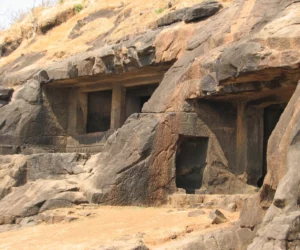Introduction The Kuda Caves, located in the Raigad district of Maharashtra, India, are a series of 26 Buddhist rock-cut caves. These caves date back to the 1st century BC to the 6th century AD. They are situated on a scenic hill overlooking the Arabian Sea, near the village of Kuda. The Kuda Caves are part…
Satavahana dynasty
The Satavahana dynasty was a prominent Indian dynasty that flourished from around the 1st century BCE to the 3rd century CE. Their realm was mainly in the Deccan region, and they played a significant part in Indian history during this period. The capital of the Satavahana dynasty was thought to be Pratisthan (Paithan), on the banks of the Godavari River. This dynasty was known for its unique blend of cultural elements. They combined traditions from the north and south of India. The Satavahanas patronized Brahmanism and Buddhism, creating a diverse religious environment.
During the Satavahana dynasty time period, trade and commerce blossomed. This led to economic prosperity. The dynasty maintained trade links with the Roman Empire, which enhanced cultural exchanges. The Satavahanas minted their own coins, which displayed their rulers and deities. These coins help us understand their wealth and influence. In art, they contributed to the development of Indian sculpture, particularly with their exquisite stone carvings. The Amaravati stupas are remarkable examples of their architectural and artistic excellence. The Satavahana dynasty had a profound impact on South Indian history. Its leaders promoted peace, cultural synthesis, and economic growth, leaving a legacy that endures.
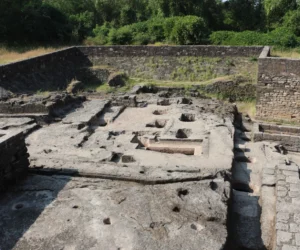
Uparkot Caves
The Uparkot Caves: Hidden Treasures of Junagadh The Uparkot Caves, also known as Uperkot Caves, are a remarkable testament to ancient Indian craftsmanship and spirituality. Located in the eastern part of Junagadh in Gujarat, these man-made caverns form part of the Junagadh Buddhist Cave Groups. Let’s explore the fascinating details of these ancient wonders and…
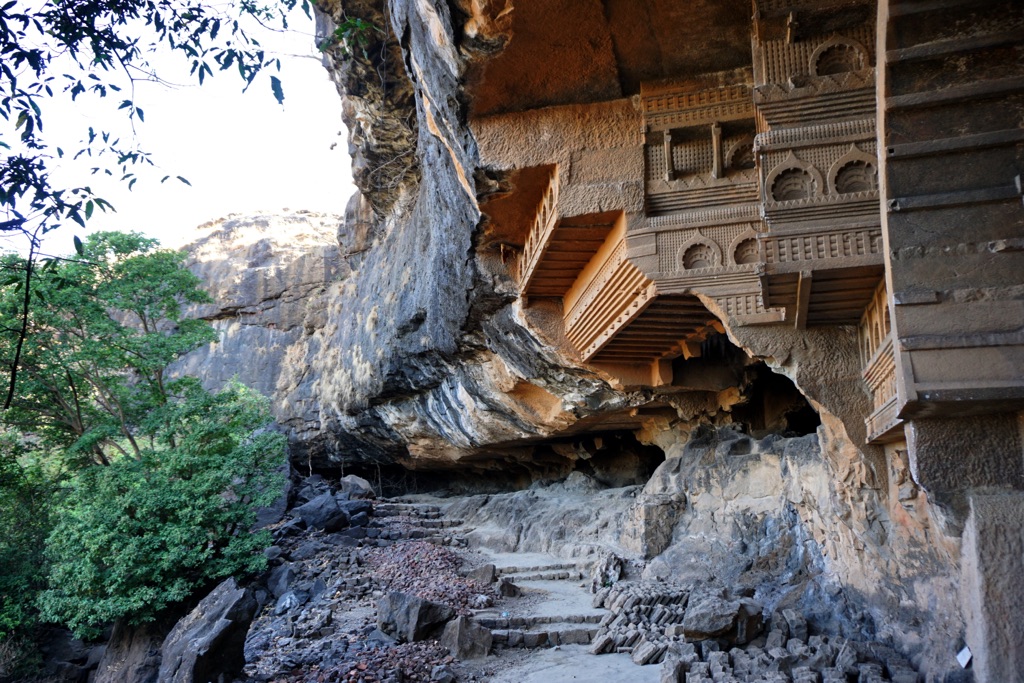
Kondana Caves
The Kondana Caves are a group of ancient Buddhist caves located in the Raigad district of Maharashtra, India. Carved into the basalt rock, they are an example of early Buddhist architecture and art. These caves offer a glimpse into the lives of the Buddhist monks who lived here over two millennia ago. The caves are renowned for their beautiful carvings, stupas, and chaityas, reflecting the rich cultural heritage of ancient India.
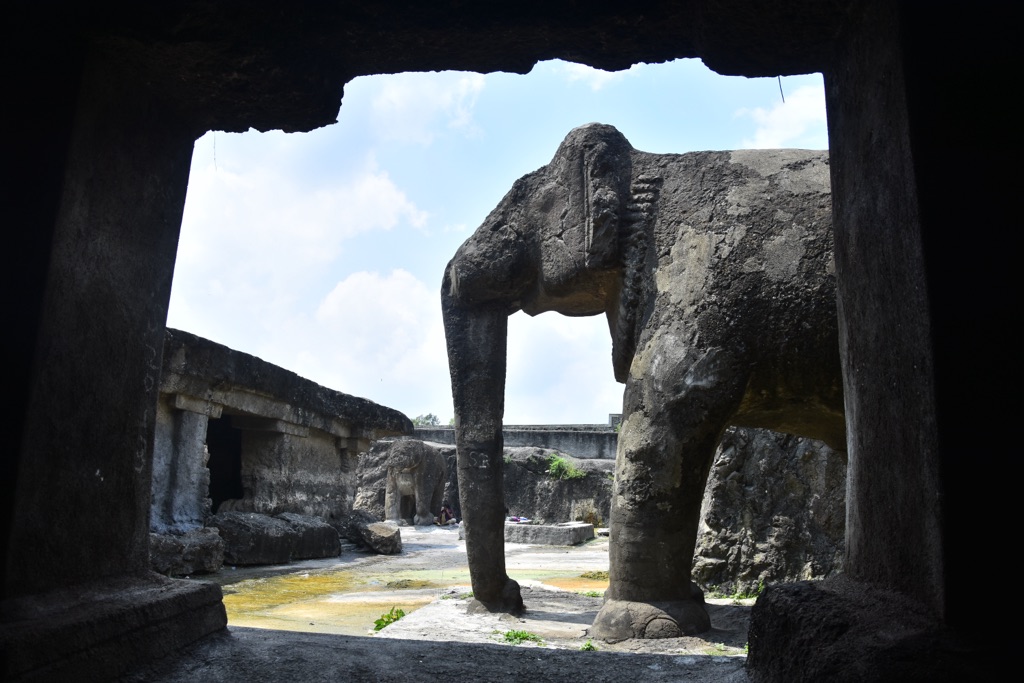
Shivleni Caves (Ambajogai Caves)
The Shivleni Caves, also known as the Ambajogai Caves, are a group of ancient rock-cut caves located in Ambajogai, Maharashtra, India. These caves are renowned for their historical significance and are believed to be associated with the great Maratha ruler Shivaji’s birthplace, the Shivneri Fort. Carved into the basalt rock of the Western Ghats, these caves offer a glimpse into the region’s past, showcasing the architectural prowess and religious sentiments of the time. The caves are a testament to the rich cultural heritage of India and continue to be a subject of interest for historians and tourists alike.
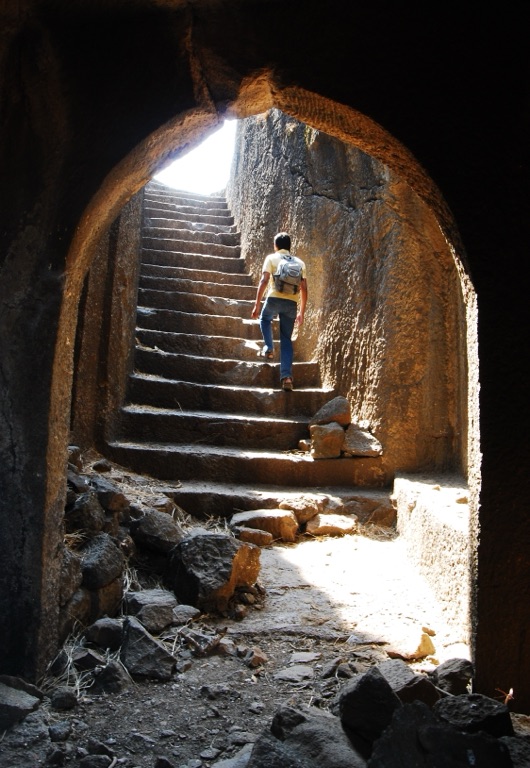
Hadsar Fort
Hadsar Fort, nestled in the Sahyadri mountain range of India, stands as a testament to the grandeur of Maratha architecture and the region’s rich history. This hill fort, located in the state of Maharashtra, was an important stronghold during the Maratha Empire. It boasts a unique design, with impressive fortifications and water cisterns, reflecting the ingenuity of its builders. The fort’s strategic location and construction played a crucial role in the defense against invading forces, making it a significant historical and architectural marvel.
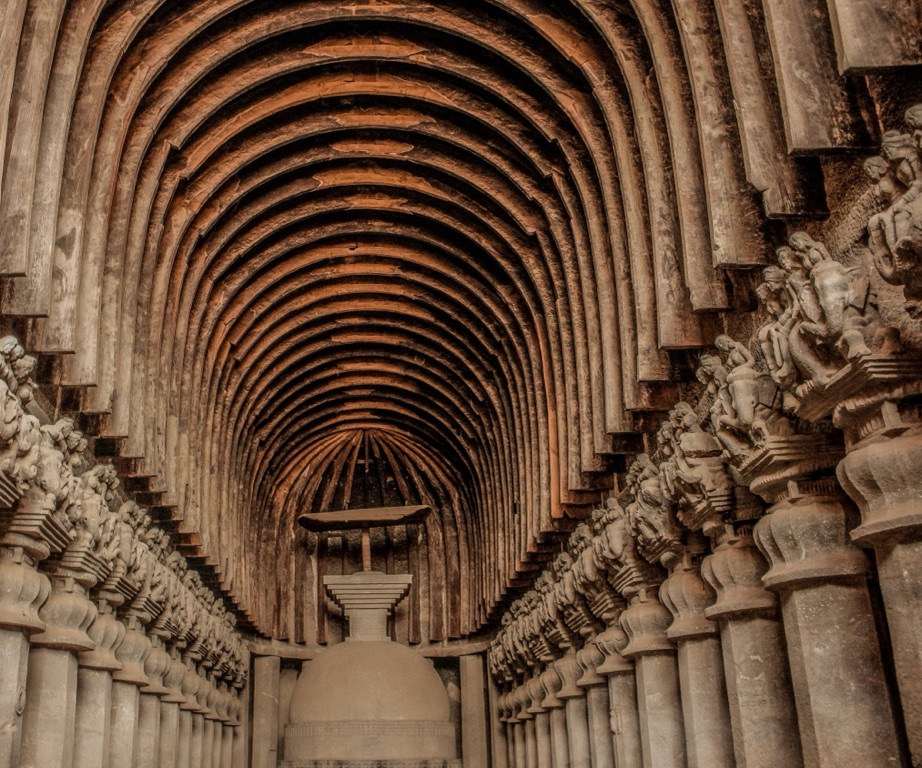
Karla Caves
Embark on a journey to the remarkable Karla Caves, and unravel the mysteries of ancient India. These caves, nestled in the Sahyadri Hills near Lonavala, Maharashtra, showcase the brilliance of Buddhist architecture. Carved from solid rock, they date back to the 2nd century BC. Visitors are greeted by an awe-inspiring chaitya, the largest in India, with its wooden arched roof still intact. Intricate carvings and inscriptions tell tales of a flourishing trade route and the patronage of the Hinayana sect of Buddhism. These historical marvels provide a unique glimpse into the religious and cultural life of ancient times.

